A huge part of growing your Shopify store is all about creating real connections that keep customers coming back. And email marketing is crucial for this - it lets you send the right messages at the right time to speak interest, and of course, improve your sales.
But there’s a lot to cover before you hit send. You need to know what works, what your customers actually want, and how to make every email count. Fortunately, we’ve got you covered!
In this ultimate guide, we’ll share proven strategies to help you get the best results from your campaigns. Including:
- What Shopify email marketing is and why it’s so important for your store
- The different types of email marketing campaigns
- How to build an email list for your Shopify store
- How to create effective and high-converting campaigns
- Shopify email flows & automation
- Optimising & analysing your Shopify email marketing campaigns
- Common mistakes to avoid
- The top 4 Shopify email marketing tools
Let’s jump in!
Shopify email marketing and why it’s important
Email marketing is a way for you, as a Shopify store owner, to stay connected with customers by sending timely, personalised messages right to their inbox. It moves beyond just selling, it’s about building relationships, encouraging repeat purchases, and keeping your brand in front of the people who matter most.
Whether you’re welcoming a new subscriber, reminding someone about their abandoned cart, or sharing an exciting product launch, email gives you a direct line to your audience. And with tools on the Shopify App Store as well as Shopify’s very own in-built marketing platform, it’s easy to design and automate great-looking and engaging emails.
Email marketing is so important because it helps turn casual shoppers into loyal customers. It keeps shoppers coming back, increases how much they spend over time, and helps your store’s customer base grow steadily.
The different types of email marketing campaigns
Email marketing isn’t one-size-fits-all. Different campaigns serve different goals - from bringing in new customers to re-engaging past ones. Knowing which type to use (and when) helps you connect more effectively and drive better results.

Welcome series
With more than 8 out of 10 people opening them, resulting in 4x as many opens and 10x more clicks than other email types, a welcome series is your chance to make a strong first impression.
Sent to new subscribers or customers, these emails introduce your brand, set expectations, and often include a special offer. It’s a simple but effective way to start the relationship on the right foot.
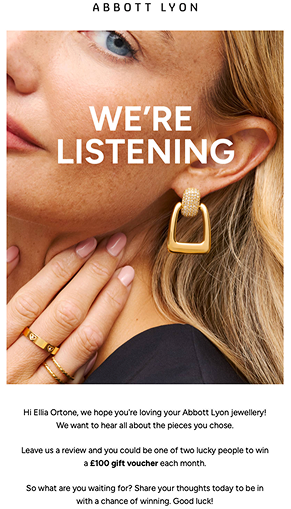
Post-purchase follow up
Post-purchase emails are sent after a customer completes an order and plays a key role in building loyalty. These can include order confirmations, shipping updates, thank-you messages, product tips, or even a quick review request.
It’s your chance to show customers you appreciate them and make their experience feel personal. A thoughtful follow-up helps build tryst, encourages repeat purchases, and can turn happy shoppers into loyal customers.

Product & collection recommendations
Recommendation emails are a great way to suggest products or collections your customers might be interested in, based on what they’ve browsed or bought before. For example, “You might also like…” or “Complete the look”.
These emails feel more personal and helpful than sales-y, which makes people more likely to click and shop. When done right, they not only boost sales but also make the shopping experience feel more curated and thoughtful for your customers.
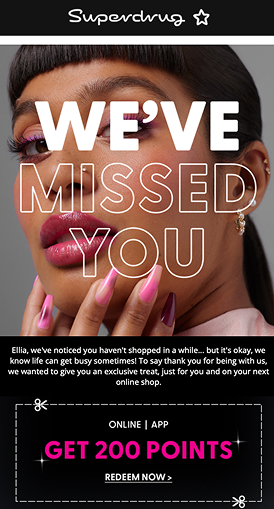
Re-targeting campaigns
Re-targeting emails are designed to bring shoppers back to your store after they’ve shown interest but haven’t made a purchase, or simply haven’t shopped with you in a while. Maybe they viewed a product or spent time browsing a specific collection - this is your chance to remind them.
These emails can include product highlights, limited-time offers, or social proof to encourage action. Re-targeting campaigns can be automated and personalised to match each customer’s behaviour, and are a smart way to recover potential sales without being too pushy.
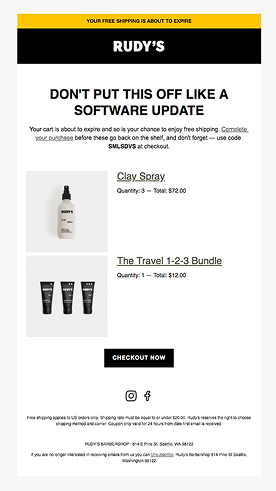
Abandoned cart recovery
Abandoned cart emails are sent when a customer adds items to their cart but leaves without checking out. These gentle reminders nudge them to come back and complete their purchase.
You could include a link to the item, a short message, and even a small discount or free shipping offer to sweeten the deal. Email marketing tools make it easy to automate these emails so they’re sent at just the right time.
Customers who receive automated abandoned shopping cart emails are 2.4x more likely to complete a purchase. And since abandoned carts are so common, recovering even a small percentage can make a big difference in your overall sales.
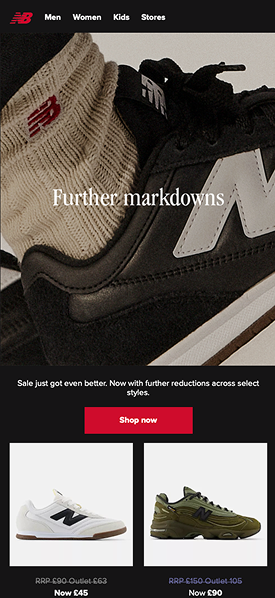
Promotions & upcoming sales events reminders
Promotional emails and sales event reminders are perfect for building excitement and driving traffic to your store during special offers. Whether it’s a seasonal sale like Shopify Black Friday Cyber Monday, a product launch, or limited-time discount, these emails help create urgency and encourage customers to act fast.
You can highlight key deals, include countdown timers, or offer early access to loyal subscribers. When timed well, these campaigns will help grow your Shopify sales by keeping your audience engaged and excited to buy.
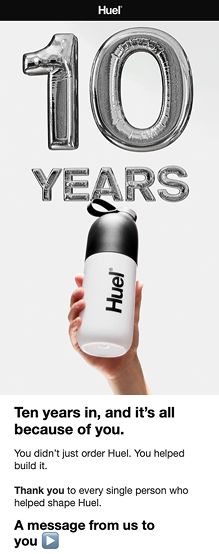
Win-back campaigns
Win-back campaigns are designed to re-engage customers who haven’t shopped with you in a while. These emails often include a friendly message, a special offer, or a reminder of what makes your brand great.
The goal is to spark interest and bring lapsed customers back to your store. With Shopify, you can automate win-back emails based on customer inactivity, making it easy to reconnect without extra effort. Even a simple “We miss you” or “Thank you for being a loyal customer” note can go a long way in reviving interest and encouraging another purchase.
How to build an email list for your Shopify store
Before you start sending emails, you’ll need an engaged email list - that’s your direct line to customers and potential buyers, giving you the chance to connect, promote, and build loyalty over time.
A great place to start is by adding simple signup forms to your website, like on your homepage, product pages, and at checkout. The key is to make sure they’re easy to find and quick to fill out. Offering incentives, such as a discount, free shipping, or early sales access, can give shoppers an extra nudge to subscribe.
Another great way to build your list is through pop-ups or slide-ins that appear after a visitor spends some time on your site. These can gently prompt visitors to subscribe without feeling intrusive.
You can also make the most of social media by promoting your email newsletter and sharing signup links on platforms like Instagram, Facebook, or TikTok. Running contests or giveaways with email signups is another engaging way to get more subscribers.
Once people start signing up, it’s important to keep their attention with valuable and relevant content. Make your emails worth opening, so subscribers stay engaged and look forward to hearing from you.
Finally, always be transparent about how you’ll use their information and make it easy to unsubscribe - this builds trust and helps maintain a healthy, engaged email list.

How to create effective and high-converting email marketing campaigns
Audience segmentation
Not all customers are the same, so your emails shouldn’t be either. Segmenting your audience means grouping subscribers based on things like purchase history, location, interests, or engagement level.
This lets you send more relevant content, like product recommendations for past buyers or special offers for repeat customers. The more tailored your emails, the more likely people are to open, click, and convert.
Personalised content
71% of consumers expect personalised interactions, and shoppers want a smooth, relevant experience.
By using a customer’s name, suggesting products they’ve shown interest in, or curating a ‘personalised edit’ based on past purchases, your emails feel more tailored and helpful.
Instead of having to browse through your whole store, customers get recommendations that actually match their style, needs, or habits. It saves them time and makes them feel understood, which builds trust and keeps them coming back.
Personalising your campaigns turns your emails from generic promotions into valuable shopping experiences - and that’s what drives clicks, conversions, and loyalty. In fact, one study found that open rates for personalised emails average 118% compared to 12.1% without personalisation!
Optimise subject lines
Your subject line is the first thing people see, and it can make or break whether your email gets opened. Keep it short, clear, and attention-grabbing. Aim to spark curiosity or highlight a benefit, like a special offer or new arrival.
Avoid clickbait, and make sure it matches the content inside. You can also use A/B testing to see which types of subject lines perform best with your audience. Emojis, personalisation, or urgency (like “Last chance!”) can help improve open rates when used thoughtfully. A strong subject line sets the tone and draws people in.
Design emails for mobile
81% of people prefer to open emails on their smartphones, so if your email list isn’t mobile friendly, you’re likely missing out on sales. Plus, 42.3% of users delete emails that aren’t optimised for mobile devices.
So to avoid ending up in the bin, use a clean, simple layout with readable text, fast-loading times, and buttons that are easy to tap. Keep subject lines short and make sure everything looks good on a smaller screen.
Designing with mobile in mind helps your message get through clearly on any device shoppers might be using.
Clear call-to-actions (CTAs)
Your call-to-action (CTA) is what guides readers to take the next step; whether that’s “Shop Now”, “Learn More”, or “Claim Your Discount”. A clear, concise CTA tells customers exactly what to do and makes it easy for them to do it.
Use bold buttons, short action-driven text, and place CTAs where they’re easy to spot. Avoid cluttering your email with too many options, one strong CTA is way more effective than several weak ones.
To put it simply, a well-placed, compelling CTA can be the difference between someone scrolling past and someone clicking through to buy.
Brand consistency & tone
73% of consumers are omnichannel shoppers, often interacting with six or more of a brand’s touchpoints before making a purchase.
That’s why it’s so important to keep your brand voice, tone, and visuals consistent across all channels - including email.
Whether it’s a welcome message or a sales promo, your emails should feel like a seamless extension of your website, Shopify mobile app, social media, and customer service.
Consistency builds trust, strengthens brand recognition, and creates a smooth, cohesive experience for your audience, no matter where they connect with you.
Send time optimisation
When you send your emails can be just as important as what’s inside them. Optimising send time means reaching your audience when they’re most likely to open and engage - whether that’s weekday mornings or weekend evenings, for example. Testing different days and times helps you find the sweet spot.
Frequency also matters: send too often and you risk annoying subscribers; too rarely, and they might forget about you. Aim for a consistent schedule that keeps your brand top-of-mind without overwhelming inboxes.
Finding the right timing and rhythm will have a huge impact on your open rates, clicks, and overall campaign performance.
Shopify email marketing flows & automation
Email automation helps you stay connected with customers and target them when it’s most relevant - without you having to manually send each one.
It saves time, keeps your messaging consistent, and ensures no opportunity slips through the cracks. Automated email flows also tend to perform better because they’re triggered by customer behaviour, making them feel natural rather than pushy.
Some examples of email flows to automate include…
- Welcome series for new subscribers
- Abandoned cart reminders to recover lost sales
- Post-purchase follow-ups to thank customers and suggest related products
- Replenishment reminders for consumable or repeat-purchase items
- Sign-up anniversary offers to reward loyalty
- Re-engagement emails for inactive subscribers
- Product review requests after delivery.
They also make your marketing efforts much more efficient. Once set up, they continue working for you - saving time while strengthening customer relationships and driving steady sales. In fact, automated emails generate 320% more revenue than non-automated emails.
That’s what makes automation one of the most valuable tools in your Shopify email marketing strategy.
Optimising & analysing your Shopify email marketing campaigns
To get the most out of your Shopify email marketing, it’s important to go beyond sending and start measuring. Analysing and optimising your campaigns helps you understand what’s working, what isn’t, and how to improve over time.
Start by keeping an eye on key metrics like open rates, click-throughs, conversions, and unsubscribes. They’ll give you a good sense of how your audience is engaging with your email content and copy, as well as what’s actually grabbing their attention.
For example, a low open rate might mean your subject lines need work, while a high open rate but low click-through could point to unclear CTAs or content that isn’t resonating.
A/B test different subject lines, send times, layouts, or CTAs to see what gets the best results - even small tweaks can make a big difference in engagement.
It’s also a good idea to look at how different segments of your audience are responding. Some groups might click more, others might need a bit more incentive, so you can tailor your content to match.
Regular optimisation ensures your email marketing doesn’t go stale. Instead, it evolves with your audience’s behaviour and keeps delivering results. Better data = better decisions = better performance.
Common mistakes to avoid
Even the best email marketing strategy can fall flat if a few key mistakes creep in. One of the biggest is sending too many emails - or ones that don’t offer real value. If your subscribers feel spammed or uninterested, they’ll stop opening your emails (or worse, unsubscribe).
Another common slip-up is failing to clean your email list. Over time, people change emails or lose interest. Regularly removing inactive subscribers helps improve deliverability and keep your engagement rates healthy.
As mentioned previously, ignoring mobile users is another big one. With most people checking email on their phones, emails that aren’t mobile-friendly are more likely to get deleted. Keep your design clean, your text easy to read, and your buttons tap-friendly.
Other common pitfalls include not segmenting your audience, using generic content, or neglecting to test and analyse your campaigns. These things can lead to lower engagement and missed opportunities to connect with your customers meaningfully.
The key takeaway? Treat your email list with care. Focus on quality over quantity, send content that matters, and always think about the customer experience. Avoiding these common mistakes will help you build strong relationships, and get better results, from your Shopify email marketing.

Top 4 Shopify email marketing tools
1 - Shopify Email
Shopify Email makes it easy to stay connected with your customers, right from the platform you already use to run your store.
You can quickly create branded emails using drag-and-drop templates that highlight your products, prices, and even include checkout links.
Make the most of Shopify Email’s built-in segmentation and automation, plus get helpful AI suggestions and performance insights to see what’s working.
2 - Klaviyo
Klaviyo takes your email marketing to the next level with powerful automation and deep personalisation - not just for email, but SMS and even WhatsApp too.
It pulls in data from Shopify and other apps, letting you create smart segments and triggers based on customer behaviour.
With advanced analytics and omnichannel templates, Klaviyo helps you deliver targeted campaigns that boost sales and build stronger customer relationships, all from one easy-to-use platform.
3 - Mailchimp
Mailchimp is a popular email marketing platform that helps you improve opens, clicks, and sales with smart automation. Create personalised email campaigns that re-engage customers, recover abandoned carts, and drive repeat purchases.
With AI-generated content and predictive segmentation, Mailchimp makes it easy to target the right audience with messages that resonate.
Plus, its detailed analytics help you track performance and fine-tune your strategy.
4 - Omnisend
With easy-to-use popups and signup forms, growing your email list with Omnisend feels natural. You can pick from tons of customizable templates to create eye-catching emails, no tech skills needed.
Automate key messages like welcome series and cart reminders to connect with customers at just the right time. Plus, Omnisend’s AI helps whip up catchy subject lines and email copy, making your life easier.
With helpful support always on hand, you’ll keep your campaigns running smoothly and your customers engaged.
.png)
How to enhance your email campaigns with cross-channel messaging
If you want to get more out of your Shopify email marketing, layer in cross-channel messaging. It’s about meeting your customers where they are - email is just the starting point. Cross-channel doesn’t mean copying the same message everywhere, it means creating a connected experience.
For example, on your paid and organic social channels, promote a flash sale in your email, then retarget non-openers with Facebook or Instagram ads. This helps reinforce your message and boosts visibility without repeating yourself word-for-word.
You could also bring in SMS marketing. Texts are perfect for quick, time-sensitive reminders like limited-time offers or cart nudges. Since most people check texts pretty much right away, it’s a great way to follow up on your emails and drive faster action. Just make sure they’re short and value packed!
If you have a mobile app for your Shopify store, take advantage of push notifications to follow up on your email campaigns, promote the same offers, and re-engage app users who may not regularly check their inbox.
Looking for more ways to grow your Shopify store?
We get it - there’s a lot of competition out there. Standing out in ecommerce today is like navigating a crowded marketplace with a hundred stores selling what you sell. But the fact that you’re here, diving deep into Shopify Email Marketing, shows you’re serious about driving real results.
To truly stand out, you need a smart, holistic strategy - and that’s where we come in. At StoreLab, we help Shopify stores like yours unlock their full potential through powerful tools:
- Shopify Mobile App Builder - Having a dedicated mobile app ensures a smooth shopping experience, with 60% of consumers preferring them to mobile sites. Features like push notifications, in-app recommendations, and seamless checkout help boost customer loyalty and increase AOV.
- Meta Ads Service - Our expert team handles everything you need for successful Meta ads, from strategy to setup and ongoing optimisation, ensuring your brand reaches the right audience and drives high-quality traffic.
If you’re ready to scale to the next level, now’s the time to test new strategies and get expert support. Chat with one of our friendly experts today - your future self (and your bottom line) will thank you.

Skyrocket your Shopify sales with a no-code Apple & Android mobile app. Available now on the Shopify app store.









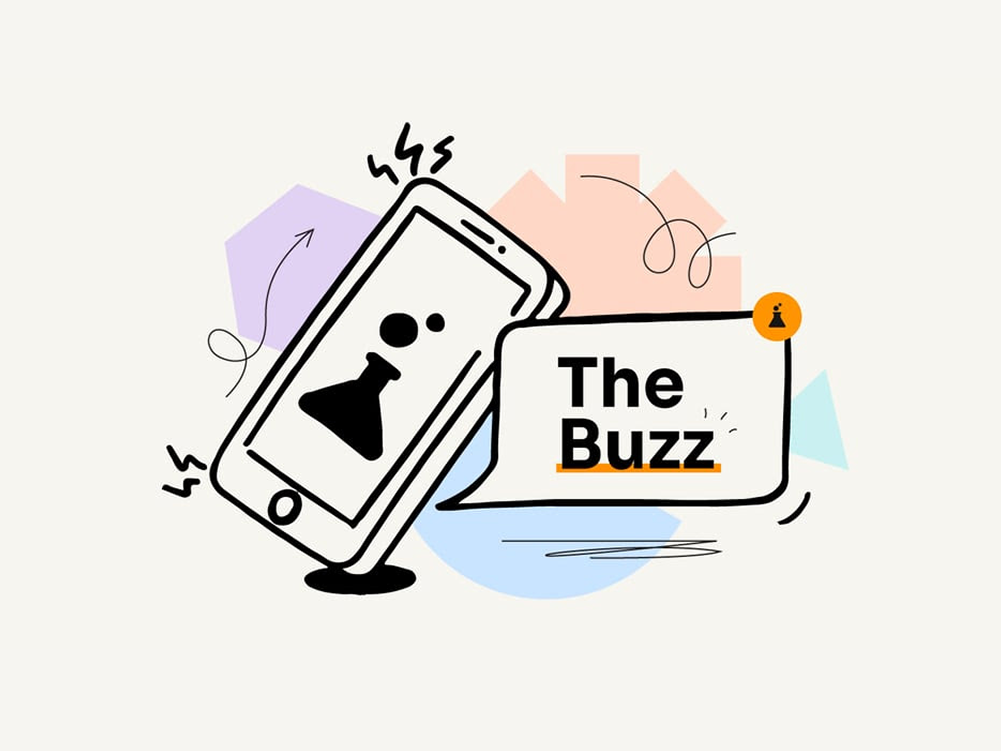
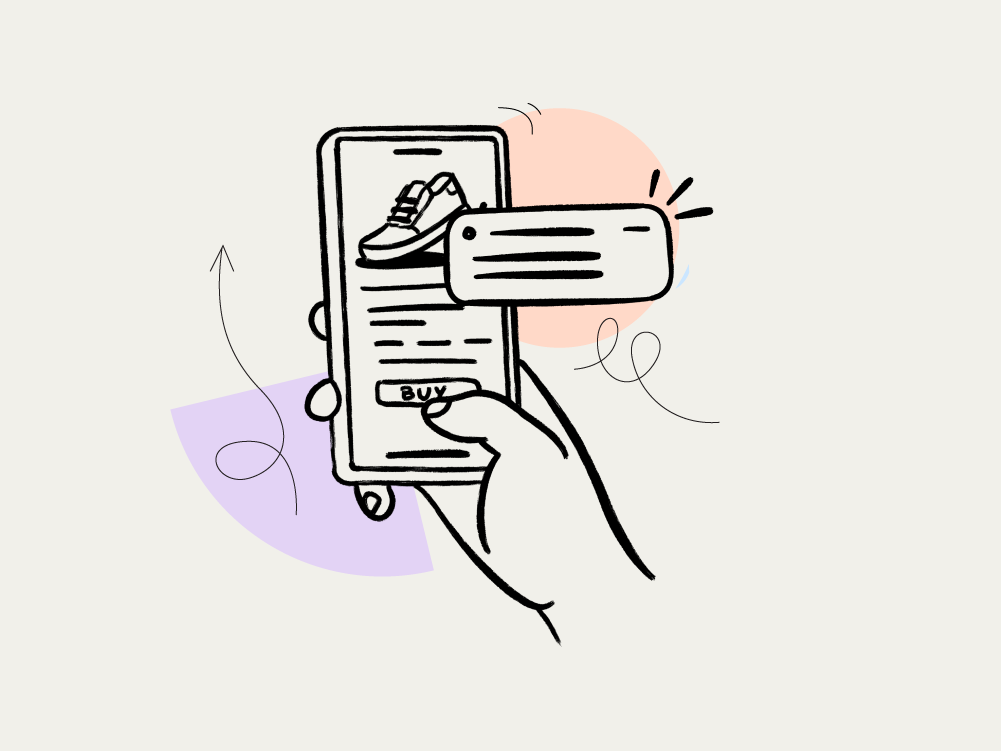




.webp)
